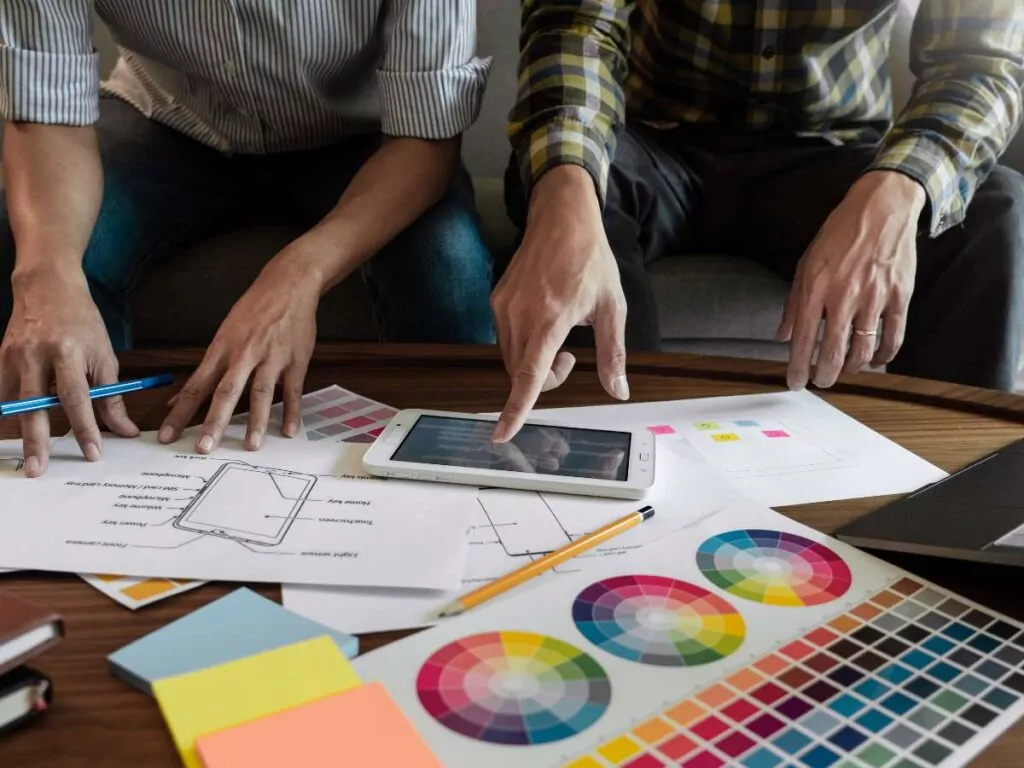A product designer’s job is to create functional and practical products that are attractive to consumers. To do this, they need a large pool of skills, including knowledge of prototyping, user testing, and computer coding. They also need to know their way around popular design tools.

10 Produce design tools and skills to learn
Designers know they have to build a lot of technical and people skills to do well in their roles and meet the requirements of a product designer job description, but what specific skills and tools should you learn? Here are 10 you absolutely need.
1. Prototyping
Prototyping is an essential skill for product design. It allows you to create a functioning version of the product before you launch it. A prototype is also classified as an early sample that helps you evaluate a new design. If you’re great at prototyping, you can perfect the product quickly.
Tools like Principle, Figma, and Adobe XD make it easy to design and test interfaces, providing valuable feedback to help you refine your products. Learning these tools will improve your work, but they’ll also get you more familiar with concepts like wireframing and user experience design. No matter what UX Agency you’d like to work for, the odds are they are using these exact tools. Using these tools can help you visualize and simulate your product design before it goes into development, allowing you to make any necessary changes early on.
2. Computer coding
Since more and more product design professionals are using CAD software and computers to create prototypes, some level of coding language knowledge is necessary. Coding skills involve learning a multitude of languages which include but aren’t limited to C++, CSS, and JavaScript.
To learn these skills, consider joining a bootcamp. If that isn’t possible, check out websites like Codecademy, Khan Academy, or Code Avengers. There are plenty of books available, but it’s better to learn how to code on the computer. After all, you need to practice to be a good coder.
3. User testing
User testing is an important part of the product design process. Testing can help identify any problems or areas of improvement in the product. A product designer needs to learn about research planning, surveying methods, and auditing to be a well-rounded user researcher.
User testing can be done online via tools like UserTesting.com and UserZoom, or in person with focus groups and interviews. Training to become a researcher takes a lot of practice. It also requires great people skills, a background in negotiation and psychology, and empathy.
4. Product lifecycle management
Product lifecycle management (PLM) is the process of managing the journal of the product. These steps include everything from ideation to disposal and everything in between. Even as a designer, PLM is important for reducing emissions and understanding creation requirements.
PLM solutions from TriStar give you a full view of your business initiatives and the ways you design and manufacture products. Plus, it enables you to share data within your business. In the end, you want to use a PLM solution that makes you more productive, efficient, and reliable.
5. Visual design
Visual design is an integral part of product design. In fact, product designers will use different aspects of visual designs to create appealing products. Designers need these visual design skills (especially layout, color theory, and typography) to construct prototypes for stakeholders.
Tools like Sketch, Photoshop, and Illustrator allow you to create beautiful visual designs that communicate your product’s purpose and features. CAD programs are also widely used. You can find general-purpose CAD software like AutoCAD, Solid Edge, and SOLIDWORKS.
6. Motion design
Motion design adds life and dynamism to your product. It’s the process of adding graphic design principles to filmmaking and audio production, which can help designers make demos, tutorials, and commercials. If you’re familiar with visual design, you just need to add time to your toolkit.
Using tools like After Effects, you can create seamless animations to help your product stand out. Other tools include Maxon Cinema 4D or ICE of Softimage, which have integrated tools. Video content can also serve as a great content marketing tool for your company’s website.
7. Wireframing
Wireframes are the blueprint of a product. Designing wireframes before starting a project helps you stay organized and save time during the development process. While wireframes serve a similar purpose to prototyping, it’s more used for interactive products to establish structure.
Tools like Balsamiq, Adobe XD, and InVision make it easy to create wireframes. However, you can also make great wireframes by using templates of previous or current design elements. When all else fails, designers can use a pen and paper to map out a rough visual wireframe.
8. UI design
UI design is the process of creating user interfaces that are accessible and visually appealing. Skills like typography, grid system, and color theory are essential for creating successful user interfaces. In the end, a designer wants to make their products really easy to interact with.
While there technically aren’t any tools that can specifically help with UI design, you should find courses that cover topics like copywriting, interactive products, and front-end development.
9. UX writing
UX writing is an essential skill for modern product design. It ensures that the words and phrases used within the product are clear and accurate, helping users understand how to use a product. To be a UX designer, you need to have an intimate understanding of consumer behaviors.
Designers should understand the 5 fundamental principles of UX design before creating products. These include empathy, strategy, usability, inclusivity, and validation. They’ll use heat maps, analytics, and customer feedback to create the most user-friendly products possible.
10. Accessibility
Accessibility is quickly becoming a must-have for product design. It ensures that your product can be used by all users, regardless of ability. When creating a product, designers should ask themselves if it’s accessible to people with disabilities, including those who are deaf or blind.
To ensure accessibility, use WCAG and ARIA guidelines when designing. The ARIA provides a framework for adding attributes to identify features for user interaction, how they relate to one another, and their current state. Whereas WCAG outlines 4 principles of accessibility to follow.
These are some of the top product design skills and tools that you should learn. Mastering them will give you a huge advantage when designing products and finding roles in your desired field.


